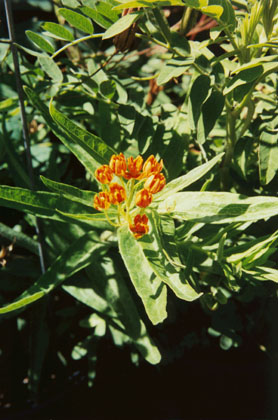Asclepias tuberosa
$5.49 – $9.89
A stunning, bright orange milkweed that is excellent for butterflies and bees.
Description
Please note: These plants are slow to come up in the spring and we will not ship them until they show some signs of new growth (typically late May – early June). Seedlings (6-packs) may be shipped earlier. Mature plants may still be dormant if shipped with other plants earlier in the spring. They are one of the last wildflowers to “poke their heads” up from the earth!
Plant these for Monarch butterflies!
Key Information:
Soil: Mesic (Medium) – Xeric (Dry). Drought tolerant.
Sun: Full Sun – Part Sun
Height: 2-3 feet
Bloom Color: Orange
Bloom Season: June – August
*Salt Tolerant*
More Detail:
Suggested Uses: Butterfly Weed has very showy orange flowers in mid-summer. They also have interesting and attractive seed pods from late summer and into fall. These plants like sandy well-drained soil but can thrive in clay soils too. Deer resistant.
Native Range: Native throughout the U.S. except for the Pacific Northwest. Native throughout the state of Minnesota.
Pollinators: Monarchs lay their eggs exclusively on milkweed species (Asclepias). Butterfly Weed is a larval host for monarchs, queens and cycnias. It is also well-loved by bees, including the federally endangered Rusty Patched Bumble Bee (Bombus affinis), hummingbirds, and a variety of other pollinators.
Flowers: Each flower has 5 recurved petals around a central crown. They bloom in 2″ clusters at the top of the plant.
Leaves: The leaves are 3-6″ long, simple, alternate, lance-shaped, shiny green, smooth on top and soft underneath. They grow on a single, unbranched stalk.
Interesting Facts:
Uses: Other than their use in gardens and restorations, Butterfly Weed and other members of the milkweed family are primarily used as fiber for cordage. In the fall, the plants are cut and split to remove the long fibers. The fibers are then twisted together to form string or yarn which is used in clothing or rope. It is often combined with the fiber from Apocynum cannabinum.
More Info: This milkweed has clear sap, as opposed to the milky sap produced by the other members of the Milkweed family.
Name: The name Asclepias is from the name of the Greek god of medicine, Asklepios, while tuberosa describes the knobby root system.
Other Names: Orange Milkweed, Chigger Weed, Pleurisy Root
More information: USDA plant profile
Additional information
| Weight | 2 lbs |
|---|---|
| Size | 6-pack, 3.5" pots, 5.75" pots, Seed Packets (at least 25 seeds) |
| Color | |
| Characteristics | Full Sun, Partial Sun, Dry Soil, Mesic Soil, Summer Blooming, Medium Height |
| Uses | Deer Resistant, Drought Tolerant, Salt Tolerant, Attract Bees, Attract Butterflies, Clay Soil, Sandy Soil |
 Wheelbarrow
Wheelbarrow






